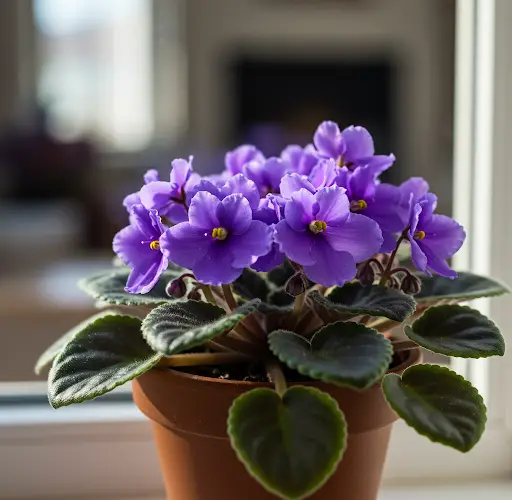Violets are delicate yet rewarding plants that bring beauty to any indoor space with their vibrant flowers and lush leaves. However, proper care and propagation techniques are essential to ensure they thrive. Today, I will share valuable tricks for maintaining violets and an easy method to propagate them successfully. By following these guidelines, you can grow healthy violets and enjoy their abundant blooms.
Essential Tips for Violet Care and Propagation
Step 1: Choosing the Right Leaves for Propagation
The first step in propagating violets is selecting the appropriate leaves. The leaves you choose should be neither too young nor too old. Young leaves may not have the necessary nutrients to develop roots, while old leaves may be weak and slow to propagate. Instead, select medium-sized leaves that are healthy and vibrant.
When cutting the leaves, ensure the stems are not too long. Long stems slow down the rooting process, while short stems encourage faster root development. Cut the leaves at an angle for better absorption of nutrients.
Step 2: Using Aloe Vera for Faster Root Growth
Aloe vera is an excellent natural stimulant for violet propagation. Its gel contains vitamins, enzymes, and hormones that encourage rapid root growth. To use aloe vera:
- Cut a fresh aloe vera leaf and allow the yellow sap to drain by placing it on a napkin for about 30 minutes.
- Slice the aloe leaf in half to expose the gel inside.
- Dip the cut end of the violet leaf stems into the gel, ensuring they are well-coated.
- Let the coated leaves sit for another 30 minutes to allow the aloe vera to form a protective layer before planting.
Step 3: Preparing the Soil and Planting the Leaves
Soil selection is crucial for successful violet propagation. The soil should be soft, well-draining, and rich in organic matter. Peat soil is highly recommended, as it retains moisture without becoming waterlogged.
To plant the leaves:
- Choose a shallow, transparent pet dish or a small flower pot with drainage holes.
- Fill the container halfway with peat soil to maintain high humidity levels.
- Insert the violet leaves into the soil, ensuring the stems are fully buried.
- Gently press the soil around the stems to provide support.
Step 4: Watering and Humidity Control
Violets require consistent moisture, but overwatering can lead to root rot. The best approach is to:
- Water the soil lightly every two days, ensuring it remains slightly moist but not soggy.
- Use a spray bottle to mist the soil to maintain humidity.
- Avoid wetting the leaves, as excess moisture can cause fungal infections.
- Place the container in a bright area with indirect sunlight, such as near a window with sheer curtains.
Step 5: Monitoring Growth and Transplanting
Within a few weeks, small leaves will begin to emerge from the planted violet leaves, indicating successful rooting. This usually occurs within four weeks. At this stage:
- Carefully remove the young violet plants from the soil.
- Ensure each plant has at least three small leaves before separating it.
- Transplant the baby violets into small flower pots with well-draining peat soil.
- Press the soil lightly around the new plants to provide stability.
- Water the transplants gently to help them adjust to their new environment.
Additional Tips for Healthy and Blooming Violets
- Choose the Right Pot:
- Small pots encourage faster root growth and development.
- Pots with drainage holes prevent water from accumulating at the roots.
- Provide Indirect Sunlight:
- Violets need bright but indirect light to thrive.
- Direct sunlight can scorch the leaves and turn them yellow.
- Place them near a window with filtered light for optimal growth.
- Fertilize Regularly:
- Use liquid plant food every few weeks to supply essential nutrients.
- Aloe vera juice can be added occasionally as a natural booster.
- Control Humidity Levels:
- Using a second pot to cover the first can help maintain humidity.
- This method accelerates growth and keeps the plant environment stable.
- Prune Regularly:
- Remove old and yellowing leaves to encourage new growth.
- Pruning helps the plant focus its energy on developing fresh blooms.
Conclusion
By following these simple yet effective violet care and propagation techniques, you can enjoy a flourishing collection of violets in your home. Proper soil, watering, humidity control, and the use of aloe vera will significantly enhance root development and growth. With patience and consistent care, your violets will bloom beautifully and brighten your space for years to come.



